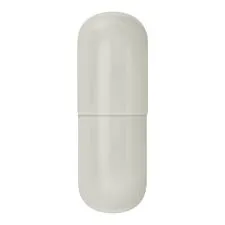
វិច្ឆិកា . 17, 2024 17:45 Back to list
hydroxypropyl methyl cellulose side effects
Understanding the Side Effects of Hydroxypropyl Methylcellulose
Hydroxypropyl methylcellulose (HPMC) is a cellulose ether and a multifunctional excipient that is widely used in various pharmaceutical, food, and cosmetic formulations. It acts as a thickener, binder, emulsifier, and film-former, making it a popular choice in the development of tablets, gels, and ointments. While HPMC is generally considered safe for use, understanding its potential side effects is essential for both consumers and manufacturers.
What is Hydroxypropyl Methylcellulose?
Hydroxypropyl methylcellulose is a semi-synthetic polymer derived from cellulose, a natural polymer found in plant cell walls. The chemical modifications that create HPMC enhance its solubility and functionality, allowing it to dissolve in cold water while remaining insoluble in organic solvents. This unique property makes HPMC an excellent candidate for various applications, particularly in the pharmaceutical industry where it is used as a filler and a stabilizer in drug formulations.
Common Side Effects
Although HPMC is regarded as safe for consumption, some individuals may experience side effects, particularly when ingested in large amounts or when they have specific sensitivities. Here are some potential side effects
1. Gastrointestinal Distress The most commonly reported side effect associated with HPMC ingestion is gastrointestinal discomfort. This can include symptoms such as bloating, gas, diarrhea, or constipation. In some cases, excessive consumption may lead to a laxative effect, causing loose stools due to its ability to retain water.
hydroxypropyl methyl cellulose side effects

2. Allergic Reactions Although rare, some individuals may be allergic to components of HPMC. Signs of an allergic reaction can include rash, itching, swelling, dizziness, or difficulty breathing. Anyone experiencing these symptoms after consuming products containing HPMC should seek medical attention immediately.
3. Interaction with Medications HPMC may affect the absorption of certain medications due to its thickening properties. It can create a gel-like barrier, potentially delaying or reducing the absorption of drugs. Patients taking other medications, especially those with a narrow therapeutic index, should consult with a healthcare provider to ensure no significant interactions may occur.
4. Eye Irritation In products designed for ophthalmic use, such as eye drops or gels, HPMC is commonly utilized to provide lubrication. However, improper use or excessive application can lead to temporary visual disturbances or irritation. Users should follow dosage instructions closely to mitigate this risk.
Safety Profile
The safety of hydroxypropyl methylcellulose has been evaluated in numerous studies, with regulatory agencies such as the U.S. Food and Drug Administration (FDA) categorizing it as Generally Recognized as Safe (GRAS) when used appropriately. However, it is crucial to consider individual sensitivities and potential for side effects when incorporating HPMC into dietary or medicinal products.
Conclusion
Hydroxypropyl methylcellulose is a versatile ingredient with various beneficial applications in food, pharmaceuticals, and cosmetics. While it is generally safe for use, it is vital for consumers to be aware of potential side effects, especially gastrointestinal discomfort and allergic reactions. It is advisable to consult healthcare professionals if you have concerns about HPMC or if you are taking other medications. By understanding the properties and effects of HPMC, individuals can make informed decisions regarding its use in their daily lives. As with any substance, moderation and awareness are key to minimizing potential adverse effects while enjoying the benefits of this useful compound.
-
Versatile Hpmc Uses in Different Industries
NewsJun.19,2025
-
Redispersible Powder's Role in Enhancing Durability of Construction Products
NewsJun.19,2025
-
Hydroxyethyl Cellulose Applications Driving Green Industrial Processes
NewsJun.19,2025
-
Exploring Different Redispersible Polymer Powder
NewsJun.19,2025
-
Choosing the Right Mortar Bonding Agent
NewsJun.19,2025
-
Applications and Significance of China Hpmc in Modern Industries
NewsJun.19,2025







